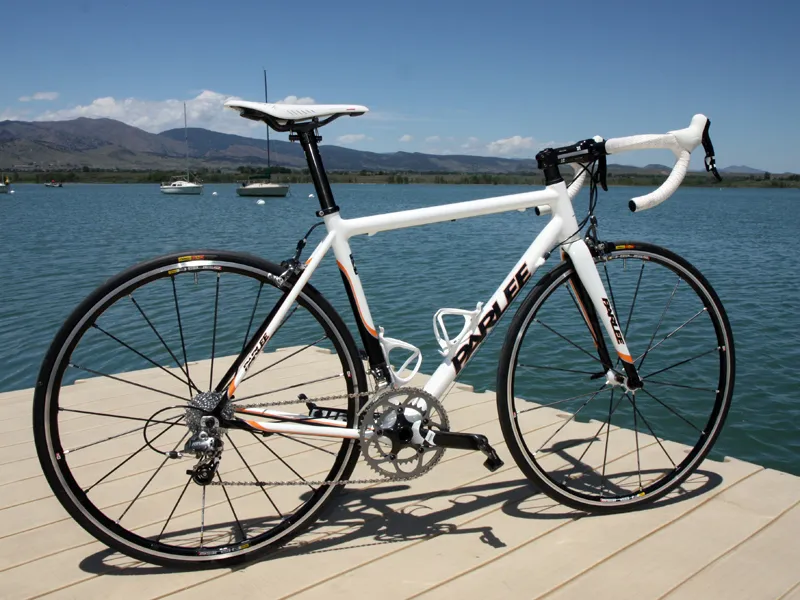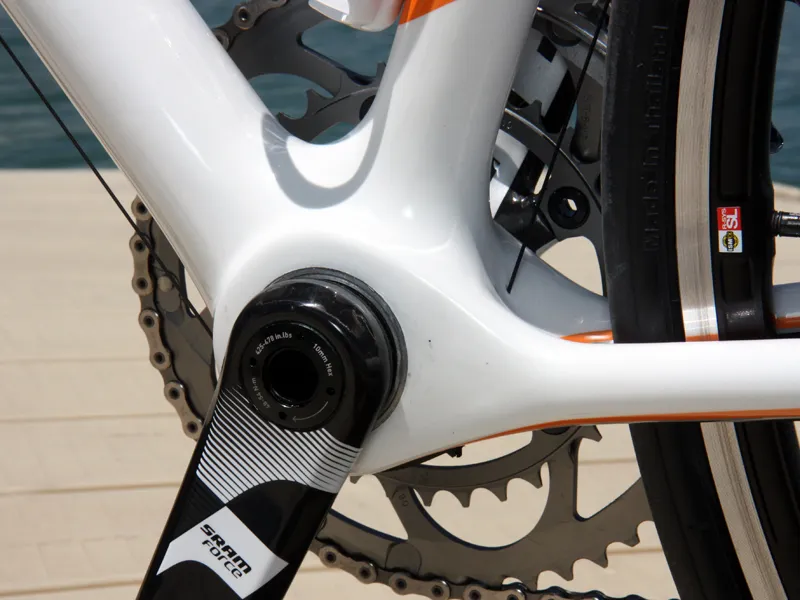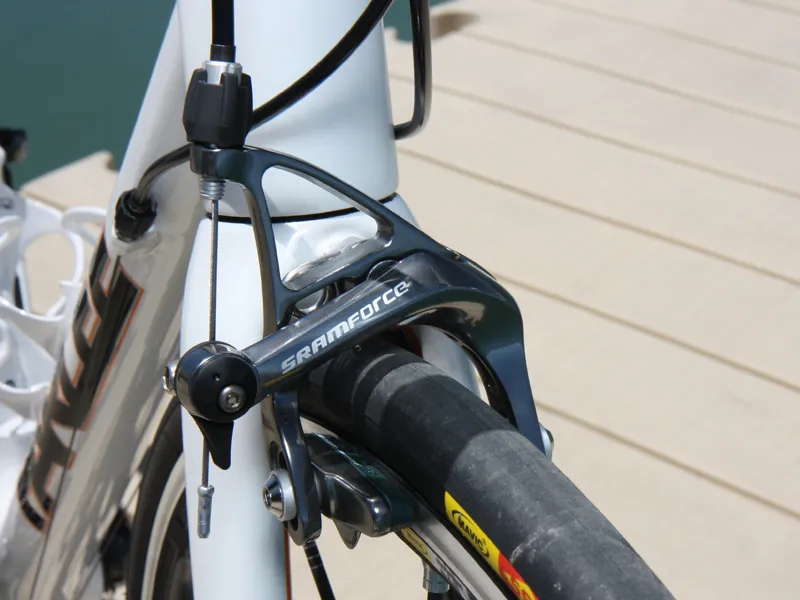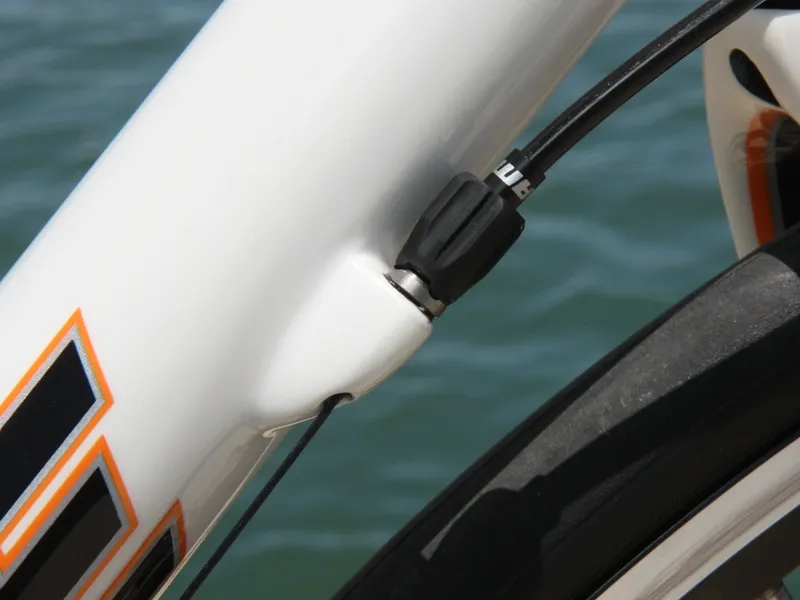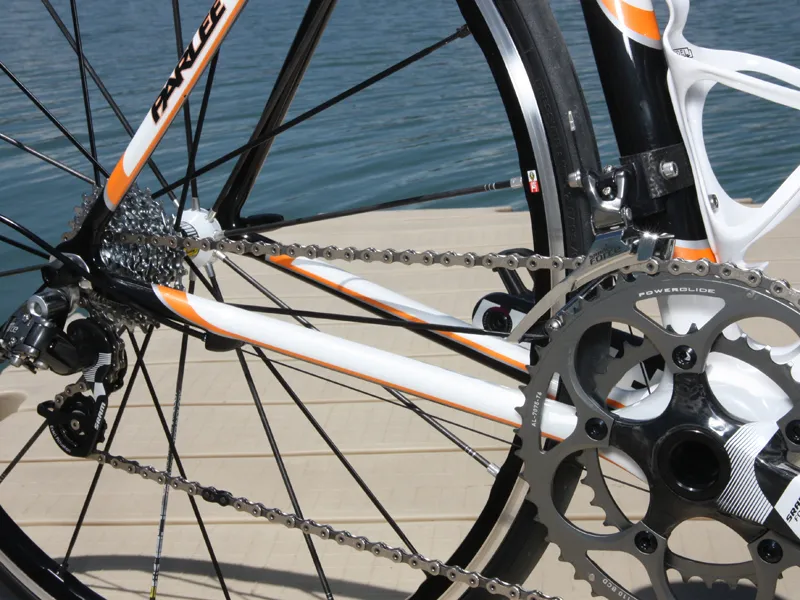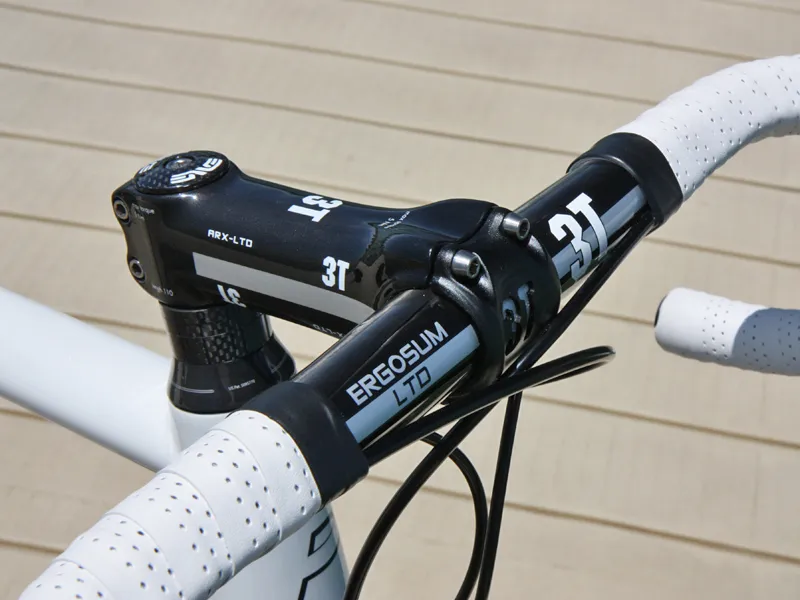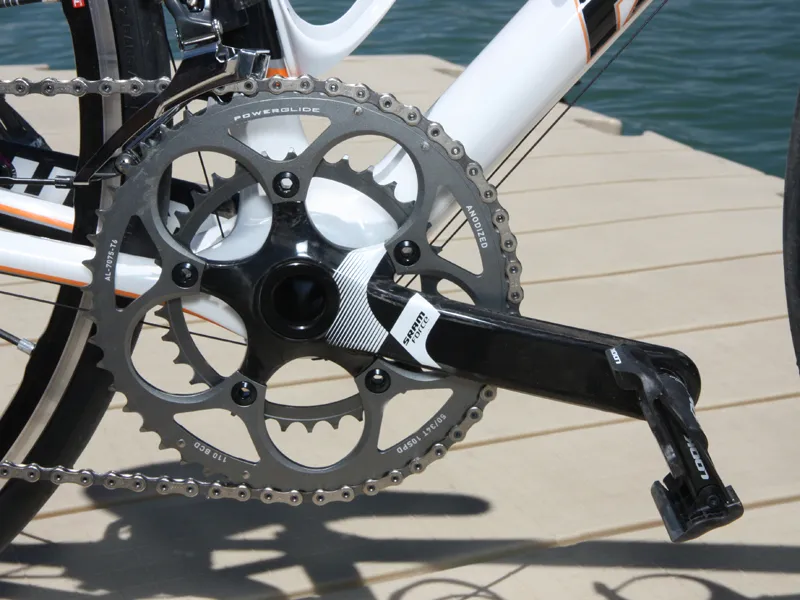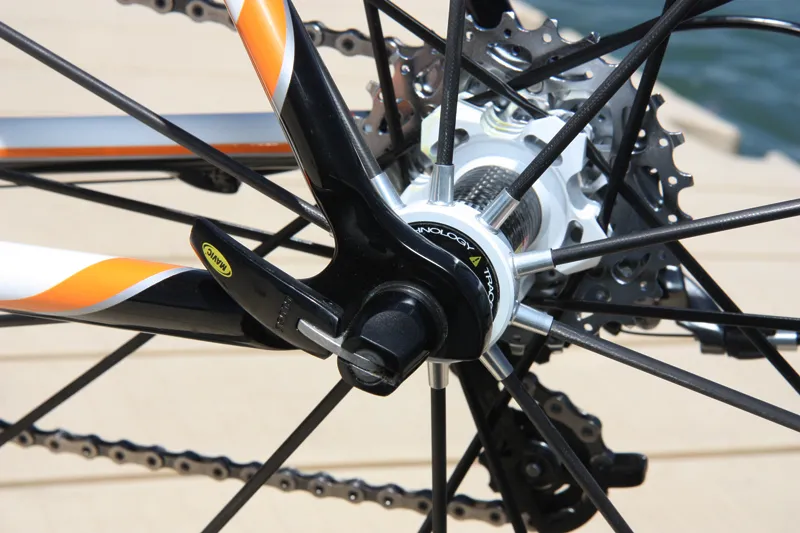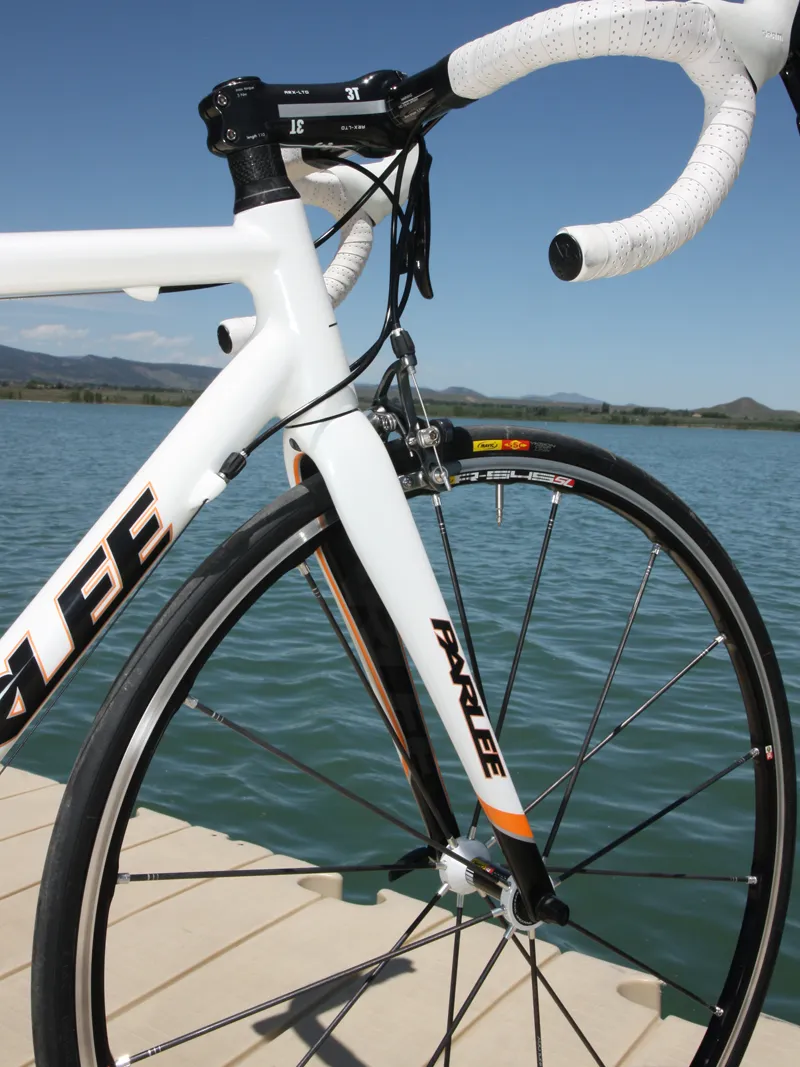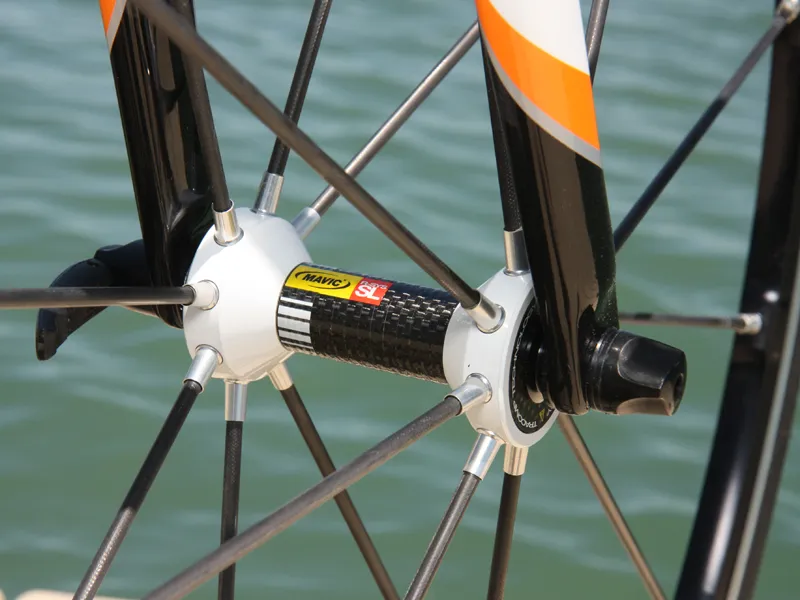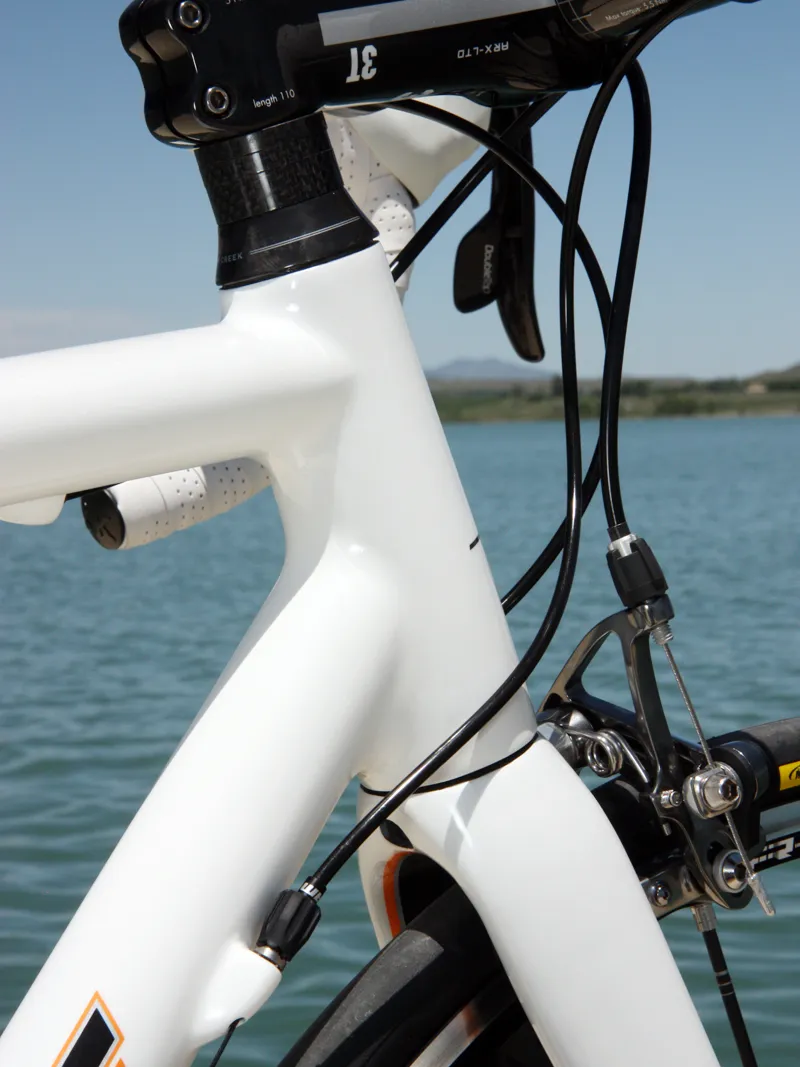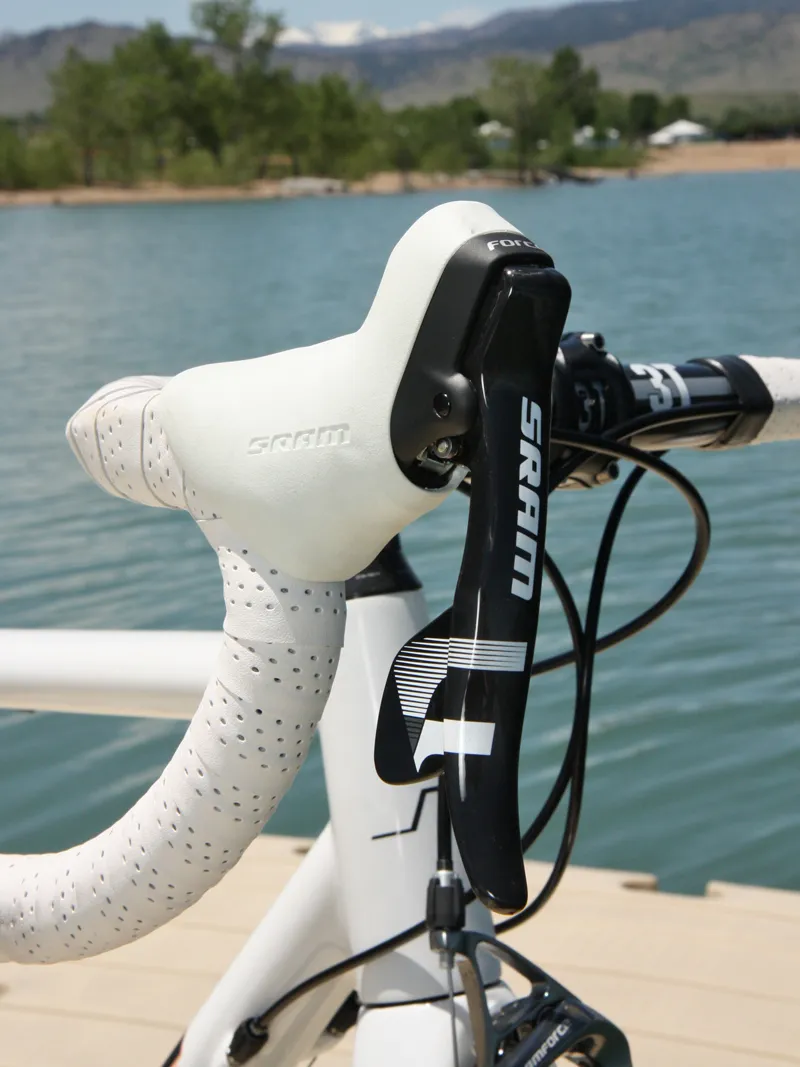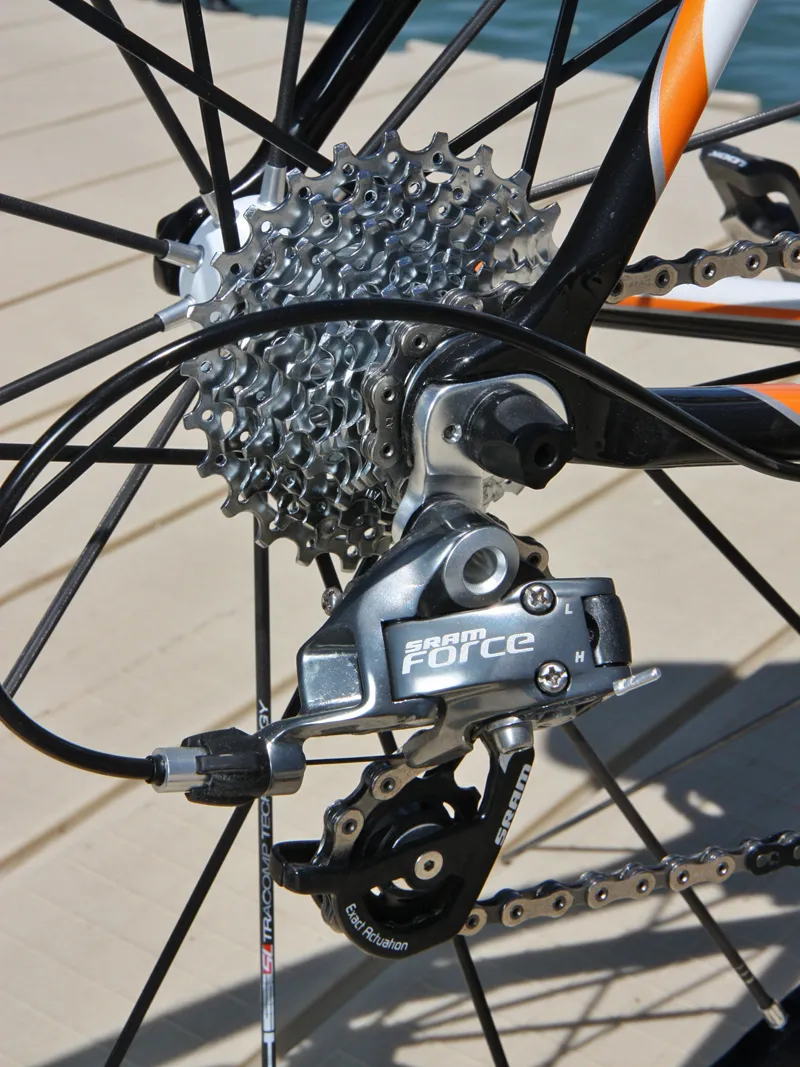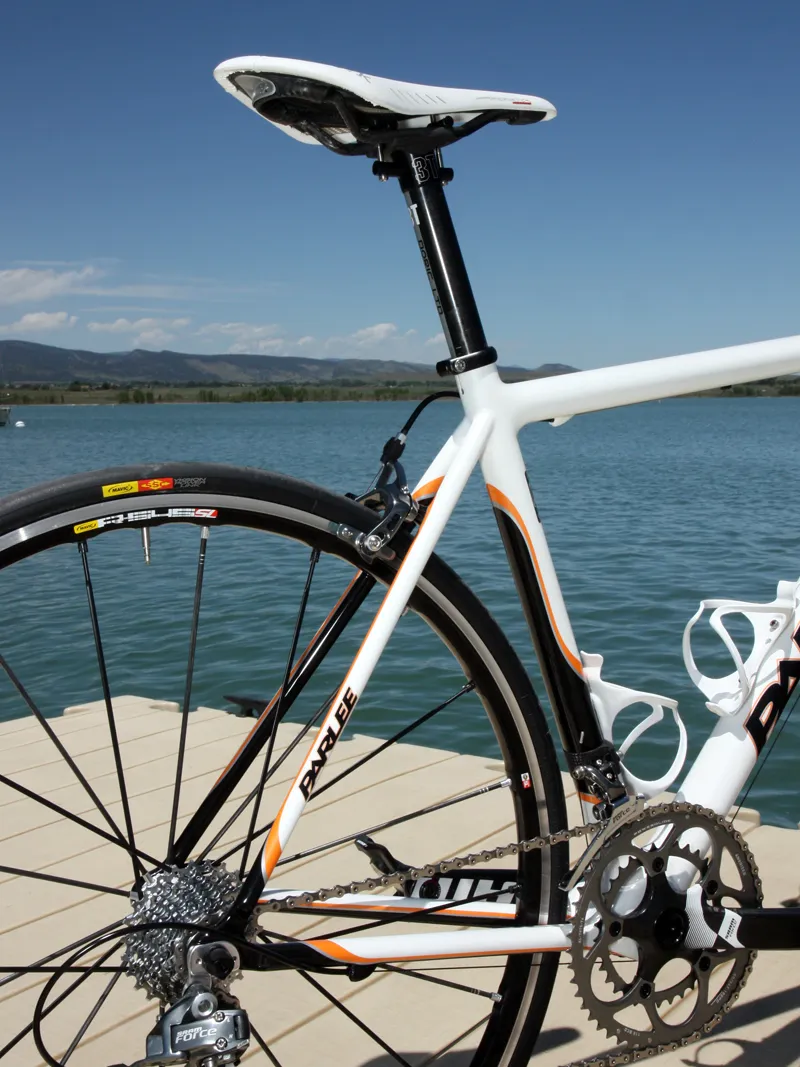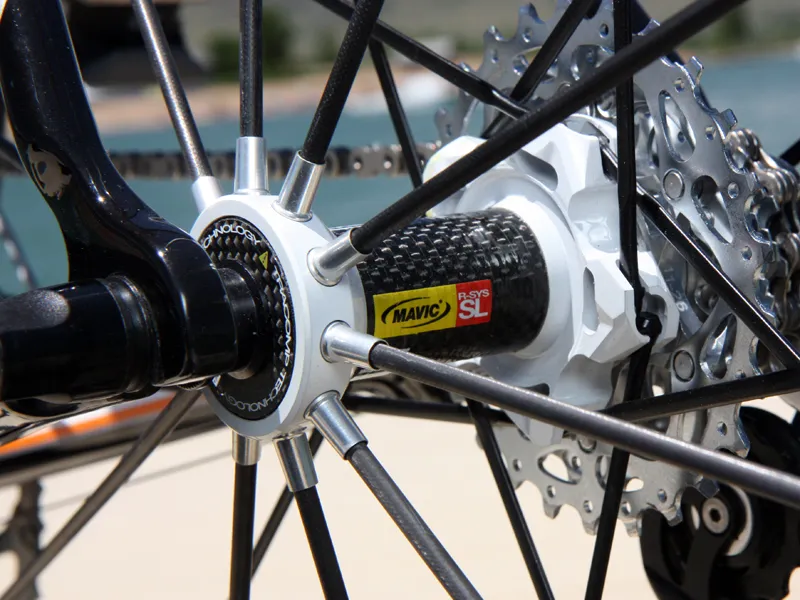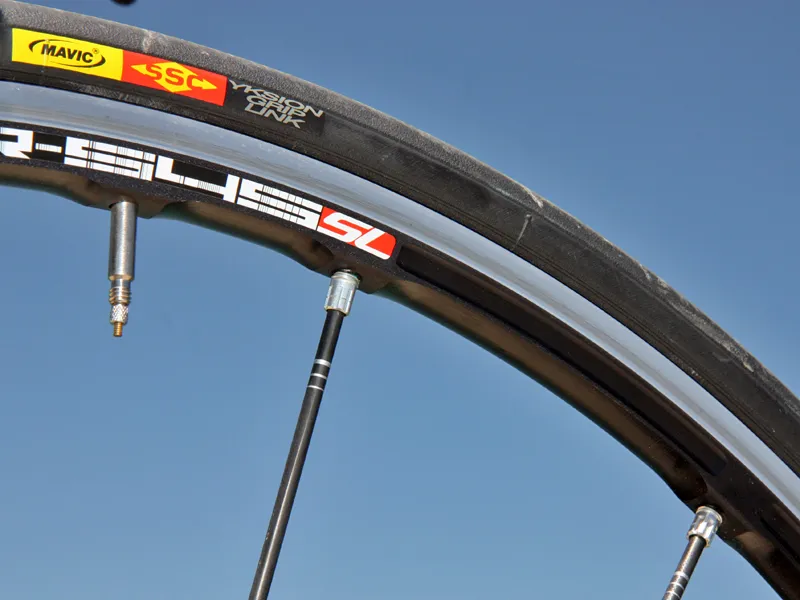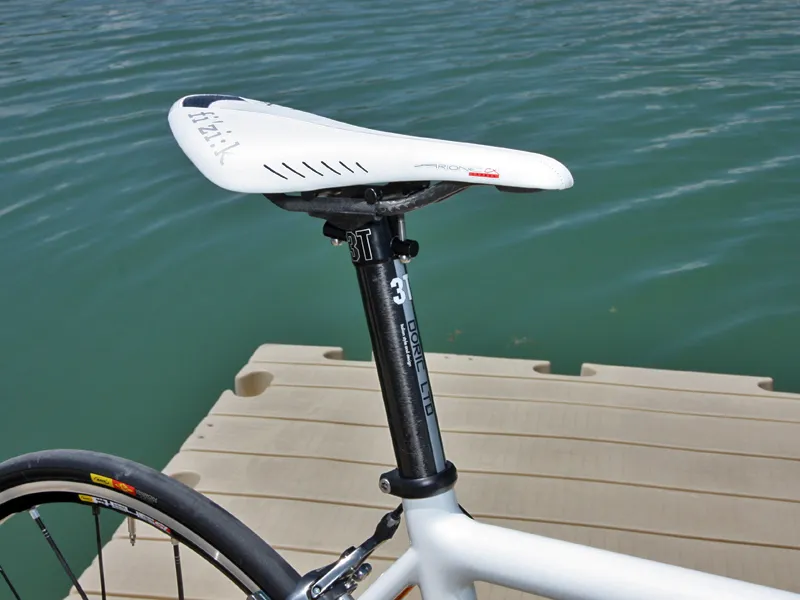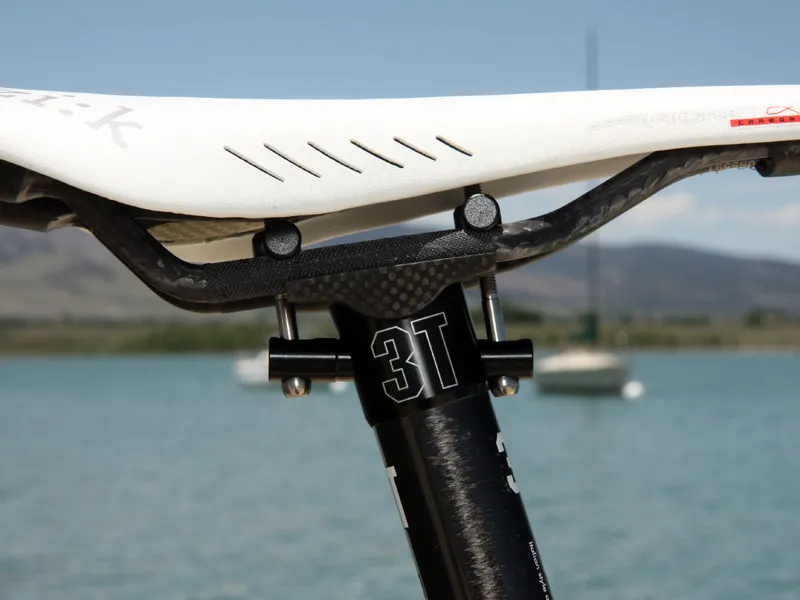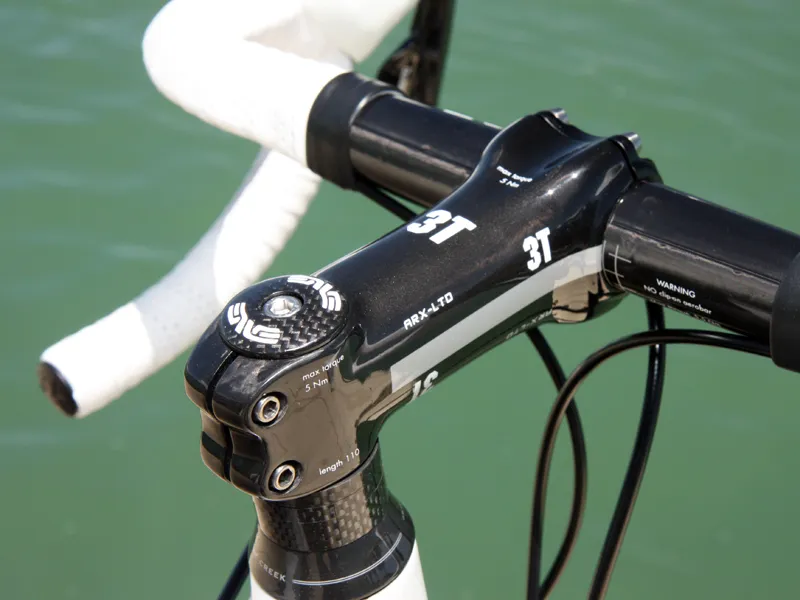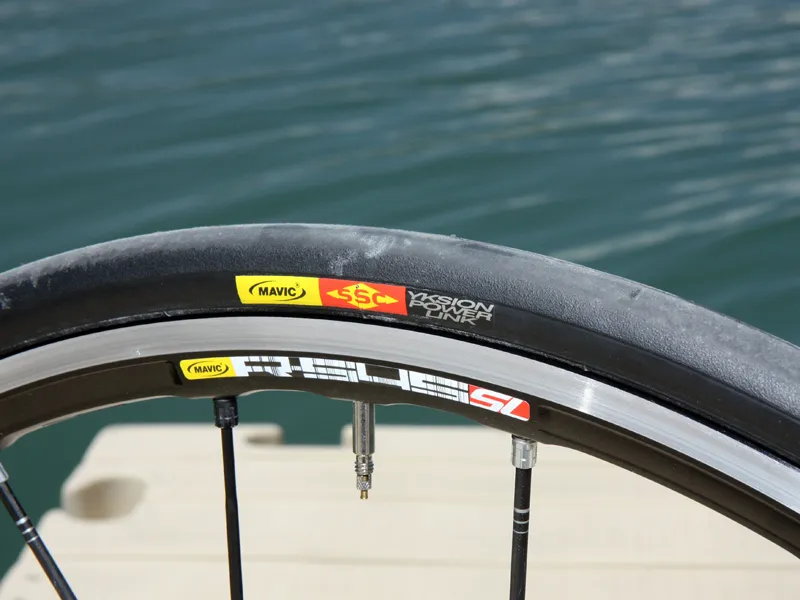Parlee shun the bloated and heavily shaped conventions of most of the rest of the high-end road market in favor of more traditional-looking round forms on their Z5. At first glance it doesn't look to offer as much performance as the competition. The proof is in the pedaling though, and if ride quality can be boiled down to a measurable science of pleasant and unpleasant vibration frequencies, Parlee have their radio dial tuned just right.
Ride & handling: Lusciously creamy but still surprisingly sharp
Rather than go all-out in the stiffness-to-weight department, the Parlee Z5 strikes a more measured balance between performance and ride quality. Broken pavement and chip seal is very well muted, washboarded dirt roads are notably less jarring, and you climb off after long days in the saddle feeling fresher than on a dedicated race steed. It doesn't so much roll across the road as it does glide and we found ourselves stopped on the side of the road checking tire pressure on more than one occasion.
The Z5 isn't just comfortable, though, it positively sings with a glorious chorus that perfectly echoes road conditions but without any undue harshness – imagine the best live concert you've ever attended but without the din of the surrounding crowd. Steel aficionados often refer to this as liveliness and the Z5 has it in spades. Handling benefits from the slightly softer and springier ride as well, particularly on fast downhills with lots of corners.
While stiffer machines often earn their handling confidence via brute precision, the Z5 has a fantastic ability to stick to the pavement, imparting a surefooted feel lacking in more unyieldingly chassis that can feel constantly on the edge of traction. Add in the middle-of-the-road angles (73°/73.5° head/seat on our medium-sized tester) and stable 70mm bottom bracket and it's perhaps no surprise that the Parlee loved to carve up fast downhill sweepers, needing just the right amount of rider input to arc a corner.
The Z5's smaller-than-typical, round-profile carbon fiber tubing might suggest to onlookers that it isn't especially stiff but they'd only be partially right. True, it's not as visceral in its reactions to rider input – be it pedaling or steering – as ultra-stout machines like Specialized's latest Tarmac SL4, the Scott Foil or any number of German superbikes, but the Parlee is predictable and dependable.
The added movement isn't so much sloppy as it is lively, and the frame 'speaks' to you in a way that more precise – but less vibrant – machines often can't match. However, big power surges for steep climbs and sprints are met with just a hint of delay – best to wind things up with a bit of finesse instead of brute force.
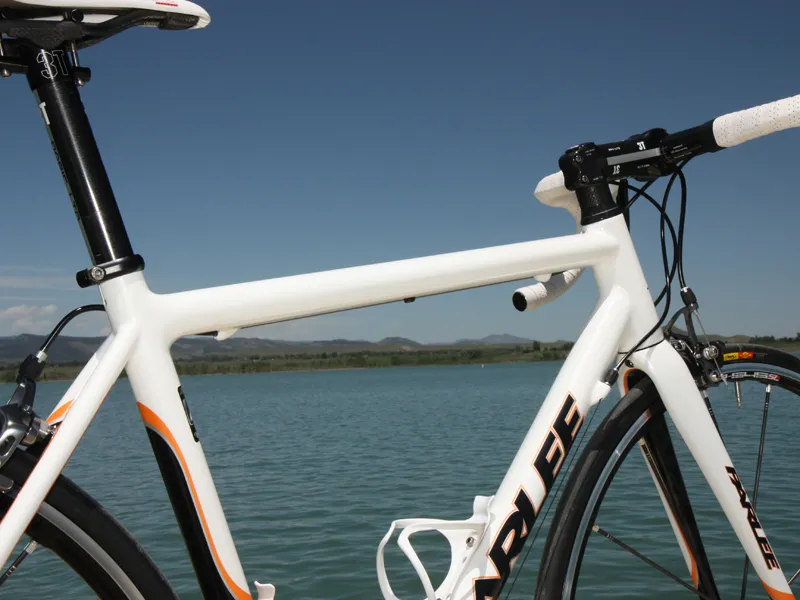
All of the frame tubes on the Parlee Z5 are essentially round
Frame: Classic tube profiles, excellent craftsmanship, light and lively
The Z5's predominantly round-profile tubes stand in stark contrast to the more heavily sculpted pipes of more mainstream competitors. That Parlee are still able to infuse such impressive solidity, weight and ride characteristics into the chassis is testament to their expertise in blending proper fiber types and layup orientations.
Actual weight for our medium-sized frame is just 920g and despite the company's small size, buyers are treated to such advanced features as co-molded carbon dropouts, carbon fiber housing stops, a true BB30 bottom bracket, molded-in headset bearing seats and even a custom 1-1/8 to 1-1/4in all-carbon fork made by ENVE Composites.
In order to bring the price down – which is still a premium US$3,700 for the frameset – Parlee build the Z5 frame overseas using modular monocoque frame construction instead of the company's more labor-intensive in-house tube-to-tube process. This makes for a smoother and less industrial looking aesthetic than the Z 1/2/3 models. There's no obvious difference in quality (at least nothing that isn't hidden beneath the thick, glossy paint) but some potential buyers might be put off.
The monocoque construction also means there are no bespoke geometry options but Parlee do offer the Z5 in six semi-sloping sizes with effective top tube lengths ranging from 51 to 58.5cm, plus optional extended head tubes for each of the six sizes. Buyers also have their choice of custom paint if the stock black, white and orange doesn't suit you.
Cable routing is fully external, with smooth runs throughout and integrated barrel adjusters on the down tube stops. While perhaps not as tidy looking as internal setups, it works extremely well with notably low friction and mechanics will appreciate the straightforward layout. The Asian-made Z4 and Z5 are the only bikes in the Parlee range to use conventional water bottle bolts – Bob Parlee is averse to drilling unnecessary holes so the upper-end models continue on with bonded-on threaded studs and external locknuts.
One interesting tech tidbit is the front derailleur mount. Rather than use a conventional riveted-on tab, Parlee instead equip the Z5 with its own ultralight carbon fiber clamp adapter. While it's remarkably lightweight – not to mention trick looking – the huge amount of surface area also makes for a very stable perch for the front derailleur without having to worry about crushing the seat tube in the process.
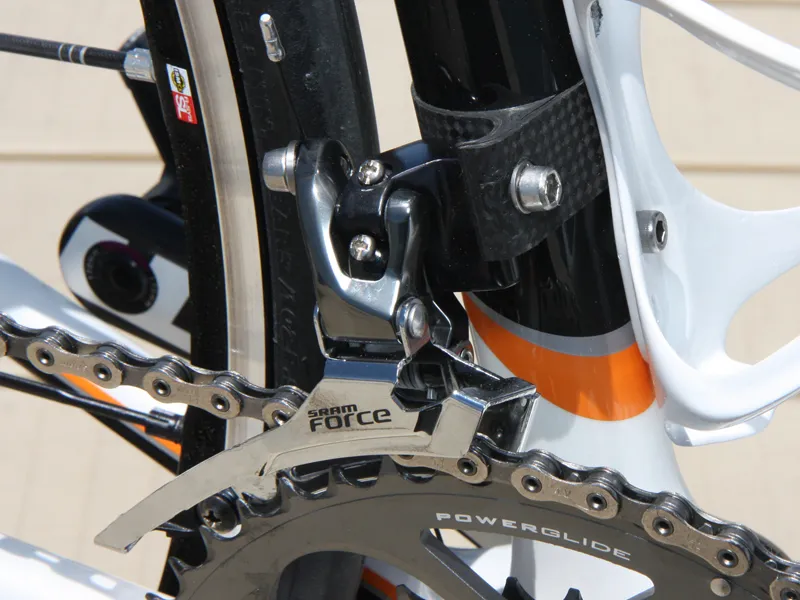
Parlee use their own trick wraparound carbon fiber adapter to mount the SRAM Force front derailleur
Equipment: Excellent SRAM Force, Mavic R-Sys and 3T combo
Parlee frames are generally built to order but the company also offer a number of factory configurations. Parlee supplied our tester with a complete SRAM Force group, Mavic R-Sys SL clincher wheels, top-shelf carbon fiber 3T cockpit components and a Fi'zi:kArione CX carbon-railed saddle to the tune of 6.27kg (13.82lb) and US$7,200 – hardly chump change for a Force bike but one that leaves little to be desired for general riding.
As we've noted in the past, shifting and braking performance with the SRAM Force bits are nearly identical to the slightly lighter – but significantly more expensive – Red package, with the lone tactile difference being a slightly longer rear shift lever throw. The only other measurable penalty is a few extra grams, though even that gap is narrowed in our tester's BB30 crank variant.
We did notice two hiccups in our particular Force build, though. SRAM recently switched their brake block spec from their long-running black rubber compound and unfortunately, the new green compound doesn't work as well. We had to adjust braking points on our regular downhill test sections and in general, the power is slow to build and the feel isn't as positive. Our right-hand shifter also started out our test session with a slightly sticky paddle. It got better over time but never completely went away and was unnerving.
Mavic may have had a rough start with their R-Sys carbon-spoked wheels but they seem to have gotten the important bits dialed in these days. Our R-Sys SL alloy clinchers were noticeably light at around 1,300g per set thanks to aggressive rim machining to go along with those now infamous hollow carbon fiber spokes. They were a delight on steep climbs, not only for their lack of mass but also for their surprising rigidity, which furthered the Parlee's reassuring confidence on the road.
The lack of tubeless compatibility in what is otherwise an airtight, non-pierced rim wall is a definitely disappointment, though, and it goes without saying that a bunch of big, round spokes and two relatively shallow and nominally rectangular-section rims don't make for much of an aero advantage. Our front wheel also came with a slightly warped carbon fiber dust cap that announced itself audibly with every rotation – something easily fixed with a bit of sandpaper but something we don't expect to see in wheels of this cost.
The 3T bar and stem came beautifully finished and were exceptionally lightweight at under 300g for the combo. We were more polarized on the bar shape, however, what with its long reach, short drop and aggressively anatomic bend, which make for a somewhat awkward cruising position on the hoods and a crushed-up feel while in the drops. The Doric LTD seatpost was occasionally frustrating given the hard-to-access bolts and extra-broad cradle, which greatly limits fore-aft adjustability. Otherwise, though, both it and the stem did their duty without any issues.
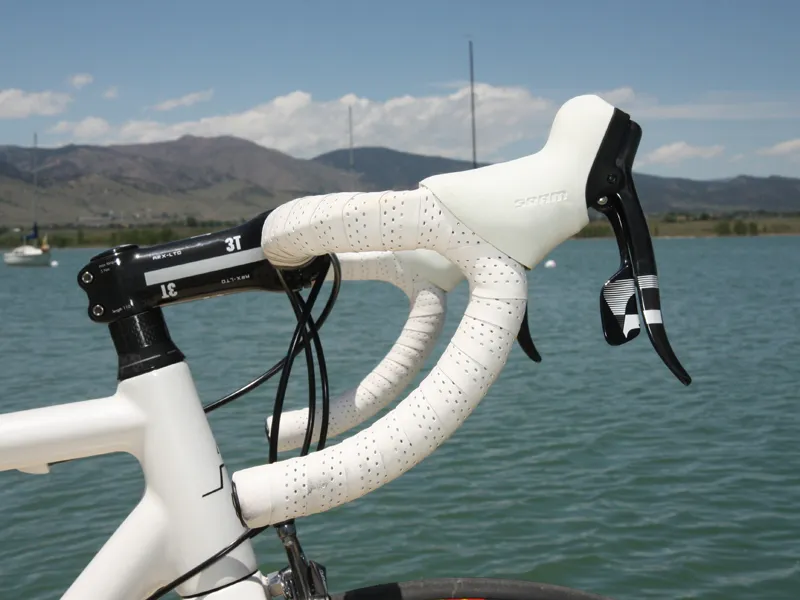
The 3T Ergosum LTD bar is light but the bend is somewhat strange with its relatively long reach and short drop
